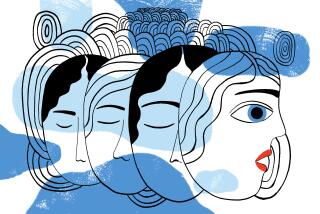The little pill that liberated the American womanâs life
Forget the pen -- the pill is mightier than the sword. Tonightâs âAmerican Experience: The Pillâ (9 p.m., KCET) chronicles one of historyâs most profound social revolutions -- the one packaged in a neat little compact.
Once considered the contraceptive of choice for swinging single women, the birth control bill was originally conceived as a way of it was conceived as a way of liberating married women from the endless cycle of pregnancy and childbearing.
The drug was created by the triumvirate of birth control activist Margaret Sanger, biologist Gregory Pincus and feminist heiress Katharine McCormick.
Sangerâs motherâs experience before the advent of the pill -- she endured 18 pregnancies until her worn-out body gave out at age 50 -- was not unusual.
Women in the 1950s, who married at the average age of 19, had three decadesâ worth of childbearing to look forward to.
Sanger provided the determination, Pincus the research and McCormick the funds to develop the birth control pill. Later in the process, a Catholic doctor named John Rock undertook the first clinical trials.
Despite strong disapproval by the Catholic Church, the FDA approved the pill in 1960, and millions of American women -- Catholic and non-Catholic in equal numbers -- promptly went on it.
Their perception of the pill slowly changed from that of something liberating to that of something taken for menâs profit and convenience at the expense of womenâs health.
It was largely due to womenâs activism that the unnecessarily high level of hormones was decreased and side-effect information became included with prescriptions.
âThe Pillâ does a fine job exploring the quiet desperation of women that led to the development of the oral contraceptive, the well-meaning yet patronizing doctors who were its early champions, and the backlash against the pillâs side effects that led to safer formulations.
One issue the documentary fails to explore is the pillâs social costs to women. True, they are now freer to pursue careers and can choose not to bear children. But today we see the devaluation of motherhood and children, societyâs refusal to make accommodations for working mothers, and menâs reluctance to commit to marriage when they can get sex without it. Is this sexual revolution or sexual anarchy? Weâve come a long way -- maybe.


